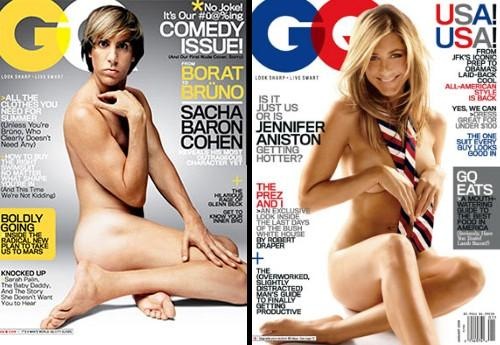By demonizing these characters, Sarkeesian concludes, the straw feminist leads real women to disassociate from feminism, even when they believe in the equal rights of men and women.
Every now and then, in Hollywoodland a character that’s identified as a feminist will magically make its way through the production process and appear on our television screens, unfortunately this is almost never good.
What the Hollywood machine churns out is a distorted and warped version of feminism which bares little resemblance to actual feminist movements.
In a desperate quest to distance themselves, their plots and their characters from anything that could in anyway be mistakenly mistaken for feminism, Hollywood writers rely on one of the most deceptive and disgusting tropes ever to be forged in the fires of mount doom, that trope is called The Straw Feminist.
In television and movies The Straw Feminist works by deliberately creating an exaggerated caricature of a feminist, which writers then fill with a bunch of oversimplifications, misrepresentations and stereotypes to try to make it easy to discredit or delegitimize feminism. The goal is to make feminists and our movements look completely ridiculous, over the top and unnecessary.
In terms of media representation, one of the most disturbing example of the Straw Feminist can be found in the 3rd season of Veronica Mars. Sadly, the Veronica Mars writing team turned the last season into a train wreak partially by introducing a group of Straw Feminists as villains in the series.
Characters like these serve to undermine and discredit feminist movements but they also serves to separate female leads which are smart, strong and witty, in this case, Veronica, from any association with feminism.
The Straw Feminist character is part of a fictional post-feminist world that only exists in Hollywood, the trope is a tool that’s used to promote the fallacy that everyone is already equal.
What’s exceptionally frustrating is that these characters often bring up legitimate feminist concerns about women’s rights and women’s equality but those concerns are quickly undermined by the writers making the characters seem over the top, crazy, and extremist.
For example the Straw Feminist appears in Married with Children as Marcy D’Arcy, the irritating and pompous neighbour. In this case, the Straw Feminist is coded as the castrating wife who emasculates and dominates her docile, stupid husband.
We see the trope repeated in Rugrats with Phil and Lil’s mother who Wikipedia describes as “Quite the jock and women’s-libber” and we can also recognize her as a straw feminist because of the giant woman’s symbol on her sweater. Much like Marcy she’s framed as the castrating wife who barks orders to her submissive husband.
In 2001′s Legally Blonde the writers threw in a Straw Feminist for cheap laughs who believes that the word “semester” is an evil conspiracy against women.
Clip – Legally Blonde (2001)
Straw Feminist: “Take the word semester ‘k, it is the perfect example of this school’s discriminatory preference of semen to ovaries, that’s why I’m petitioning to have next term be referred to as the winter ov-es-ter.”
Another problematic example comes from the Powerpuff Girls episode, “Equal Fights” in the third season. The Girls encounter a female villain named Femme Fatale who we can immediately see is a straw feminist because she has the oh-so-terrifying woman’s symbol on her mask, her clothes and even as her weapon.
The episode begins with the traditional pan around Townsville showing us that gender inequality is not a problem.
Clip – Powerpuff Girls “Equal Fights”
Male Narrator: “A city where everyone gets their fair turn”
Even boys and girls on the playground get along.
Clip – Powerpuff Girls “Equal Fights”
Boy: “Your turn Jenny… think fast” “Oops”
Girl: “Very funny Joey, you’re gonna get it”
But this harmonious balance is deviously disrupted by Femme Fatale and her conniving, deceptive women’s rights rhetoric.
Curiously though, Femme Fatale brings up some pretty valid points about the lack of female faces on American money, or the lack of female superheroes in pop culture.
Clip – Powerpuff Girls “Equal Fights”
Femme Fatale: “Surely, you’ve noticed, female superheroes aren’t nearly as revered as male superheroes.”
Bubbles: “Sure they are! There’s Supergirl, Batgirl”
Femme Fatale: “They’re so lame, merely extensions of their male counterparts.”
The Girls are influenced by Femme Fatale’s malicious rhetoric to see benign, routine every day things as a conspiracy against women and against them personally.
The writers of the Powerpuff Girls have carefully created a fantasy world without gender oppression, so that they can have the Girls start seeing oppression where none exists.
Clip – Powerpuff Girls “Equal Fights”
Blossom: “We saw what you did Joey Finklemeyer”
Joey: “Whhaaa’d I do?”
Buttercup: “Shut up!”
Blossom: “Don’t play dumb with us!”
Professor Utonium: “I’ve finally caught up on all the housework and all that’s left is your room, if you could take care of that please.”
Professor Utonium: “uh, I’ll just do it later”
Blossom (on phone): “Why don’t you get some big strong man to save your precious city or better yet why don’t you stop making women do your dirty work and do it yourself!”
The problem is, all of these things that the Powerpuff Girls are complaining about are actually happening! Girls are getting bullied on school yards, and women are overwhelmingly responsible for household duties. Women are being institutionally oppressed all the time in nearly every facet of our lives.
Once again this trope is used to separate the Powerpuff Girls from any notion that they could in anyway possibly be feminist characters. Because you know you awesome, funny, world saving, independent young women but you know, not feminist…
The Straw Feminist trope is taken to a whole new level in adult animation shows such as South Park or Family Guy. In the episode “I Am Peter, Hear Me Roar” the Family Guy writers took a stab at feminist attorney Gloria Allred. Allred is known for taking on high-profile cases defending women who have been assaulted or harassed. In this attack, the Family Guy writers created a character coincidentally named Gloria Ironbox who brainwashes Peter into thinking he is a woman, after he is accused of sexual assault. The emasculation and feminization of Peter and his sudden transformation into a feminist is played for laughs.
Clip – Family Guy “I Am Peter, Hear Me Roar”
Peter: “I can’t respect men, men are the reason our world is in such lousy shape. If men were as caring as women we wouldn’t have crime or violence.”
Because you know, nothing is worse in a patriarchal society then being a woman, except maybe being a feminist…
In these fictional narratives institutional oppression and wide scale sexism just doesn’t exist. It’s a carefully constructed world where feminism is no longer needed.
Even the comic book world delves into this trope, with Y the Last Man. When all the men on earth die except for one, there is a extremist homicidal group called the Daughters of the Amazons. The violent, vigilante group is founded on the disdain and hatred of men and anyone who mourns the death of men, even though there aren’t anymore men.
Let’s get back to Veronica Mars, there is a 9 episode story arc in the 3rd season about a series of rapes that occur on the University Campus. A group of straw feminists on campus hold demonstrations, volunteer with the Ride Home Safe campus program to escort young women home, and demand that the university institute an official sexual code of conduct.
All of these are logical, rational and important steps to creating safer college campuses. However, the writer quickly dismisses these characters as irrational, stubborn, pigheaded man-haters, and it serves to fulfill the tired old stereotypes about angry and militant women of colour.
Clip: Veronica Mars “Spit and Eggs”
“Pig” “Rapist”
The writers of Veronica Mars takes the Straw Feminist to an obscene level by actually having them “fake a rape” in order to blame the fraternity.
Women lying about sexual assault is a grossly overused myth. Women generally don’t put themselves through the social shame of admitting assault for petty personal revenge.
In just a handful of episodes the creators of Veronica Mars undermine the work that thousands of students are doing globally on there campuses to end violence against women.
While we see the Straw Feminist over and over again in television and movies, it’s also unfortunately deployed on a regular basis by American talk shows and news pundits.
Mainstream religious and conservative news media often attack women with deliberate misrepresentations and extreme exaggerations of what feminism is. This false impression has been infused into the mainstream by popular talk show hosts such as Michael Savage, Glenn Beck and Bill O’Reilly.
You may have heard the slur “Feminazi” popularized by Rush Limbaugh. A term used to discredit and demonize any woman fighting for social equality.
Clip: The Rush Limbaugh Show (2010)
Rush Limbaugh: “The feminists, the feminazis have been working for years to this end, advance women by diminishing men.”
Ya…
The Straw Feminist is set up to perpetuate and advance the myth that feminism is no longer needed, that we have arrived at gender equality and anyone who disagrees is quickly demeaned and portrayed as an extremist.
This trope represents a backlash against feminism and groups supporting women’s rights. As we make more gains towards equality, the backlash gets stronger.
It’s an old yet effective tactic but clearly it’s working because I often hear young women saying, “I believe in the equal rights of women but I’m not a feminist.” This sentiment is a direct result of the straw feminist trope. Because women want to distance themselves from the extreme and false representations they are seeing on tv, movies and talk shows.
We need to proudly claim the title and fight back against these distorted and demeaning representations in the media and in real life, and if y’all really do believe in the equality of women then we need to continue this long legacy of feminism and fight for it.
And Hollywood, get over your fear of strong, smart and talented women and stop contributing to the backlash by writing absurd and ridiculous Straw Feminist characters.
Now I will leave you with Polly Bergen saying something pretty awesome on the otherwise unremarkable show Commander in Chief.
Clip: Commander in Chief “Unfinished Business”
Rebecca Calloway: “Look just because it matters to mom doesn’t mean it matters to me. I mean, I’m no feminist.”
Kate Allen: “So you don’t believe that women should have rights equal to those of men”
Rebeca Calloway: “w..well of course I do… it’s just-”
Kate Allen: “Might I suggest my dear, that you look up the definition of feminist.”
Music: Nellie McKay “Mother of Pearl”
“Feminists don’t have a sense of humour. Feminists just want to be alone. Boo-hoo-hoo-hoo”











